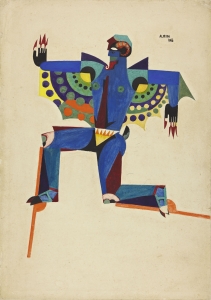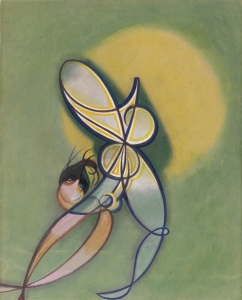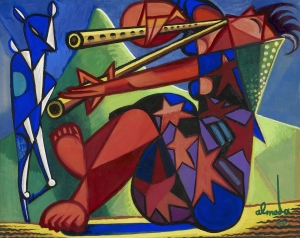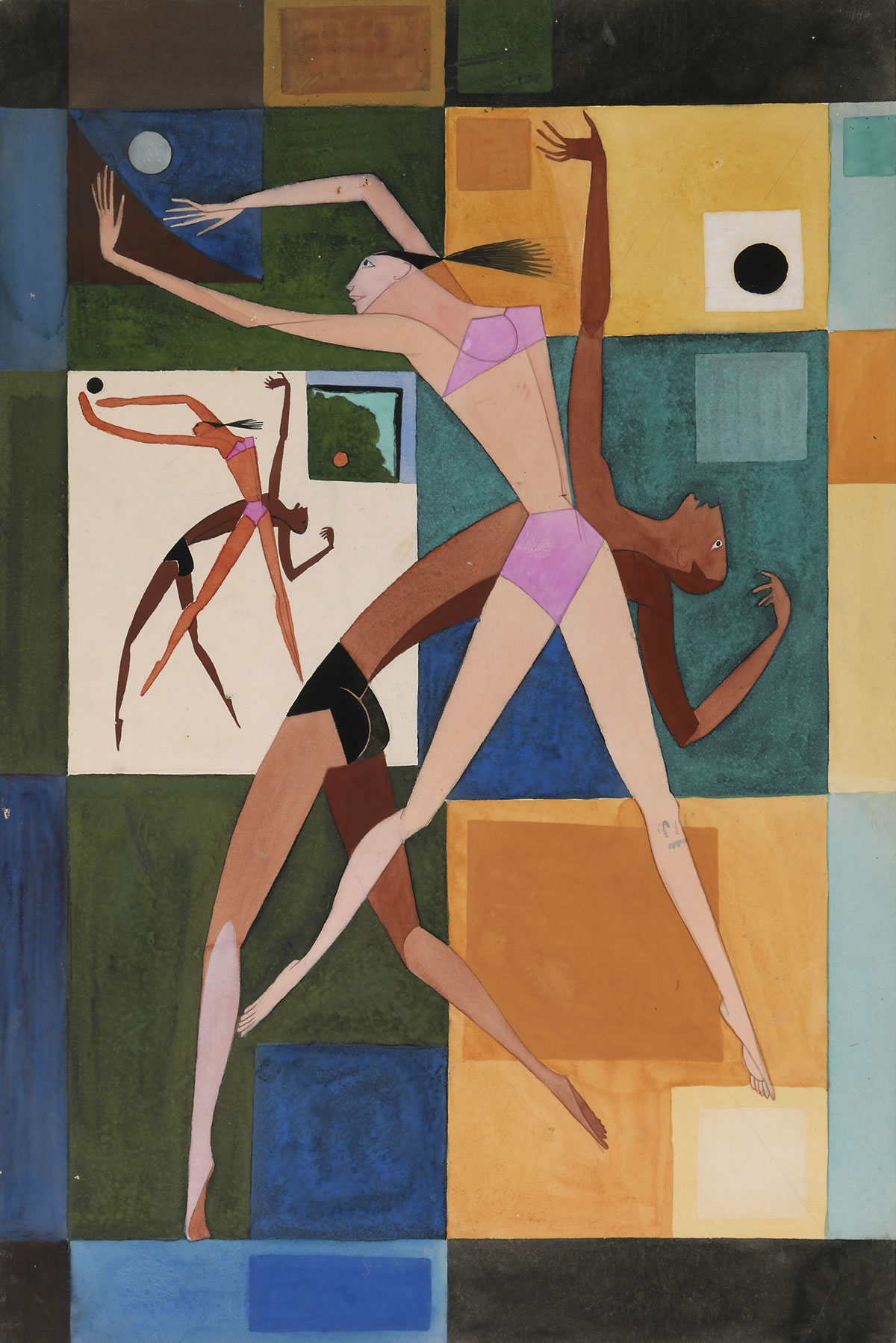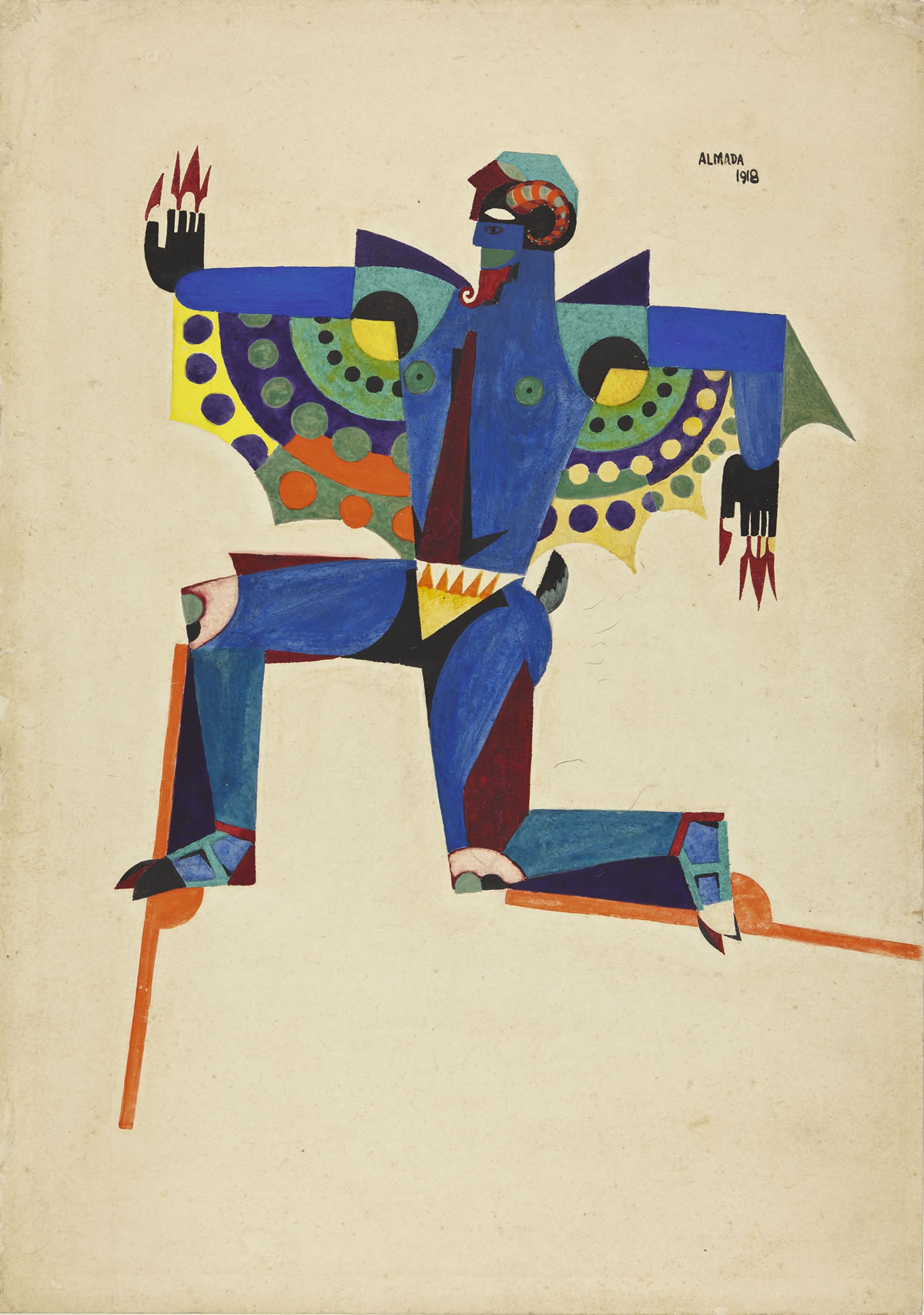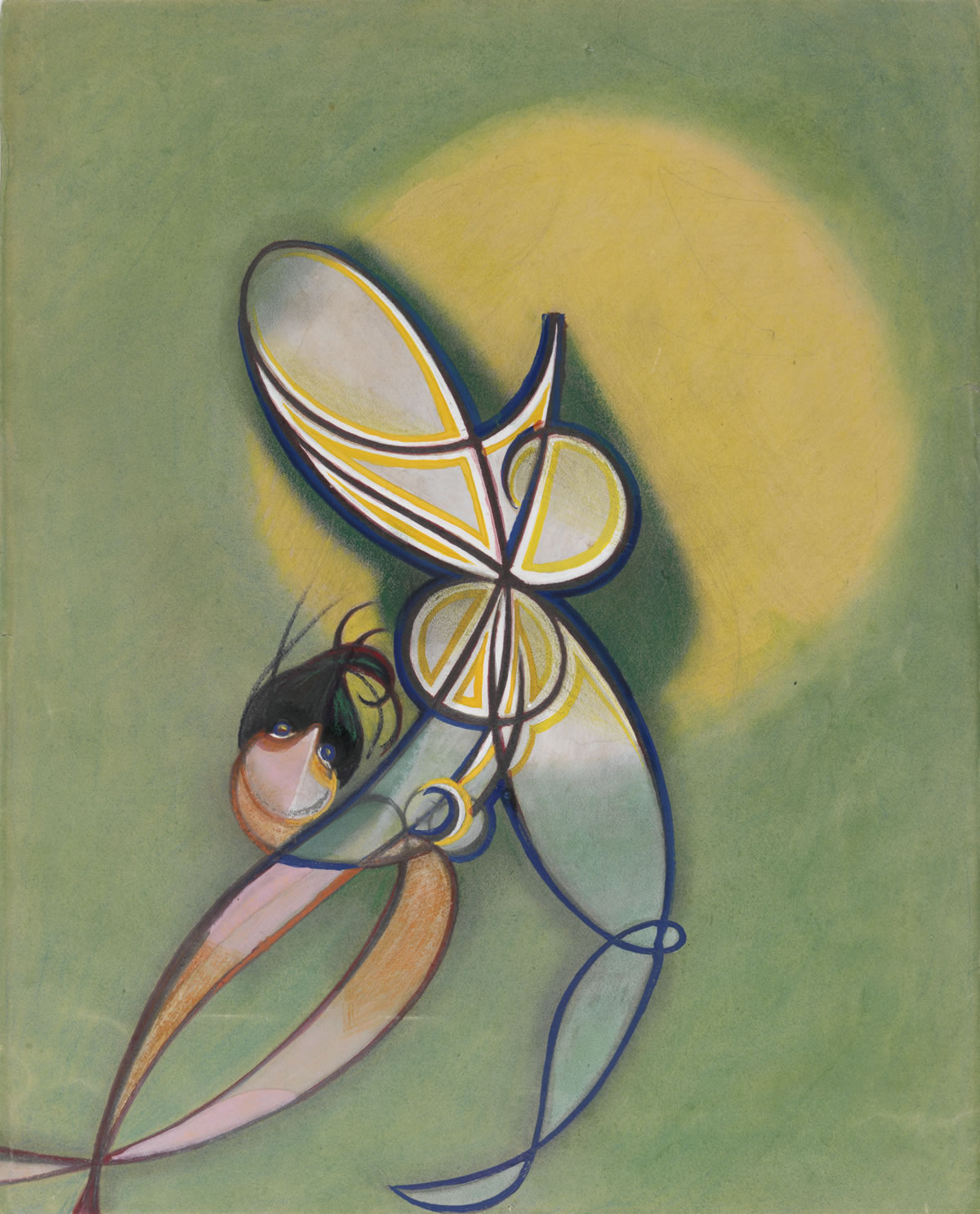

Per formare
Almada Negreiros was seen as a performer artist (from the Latin per formare, to give shape) by later generations, who saw in him a precursor to the ephemeral strategies that became common amid the so-called neo-avant-garde of the 1960s, and which predicated the artistic process itself as enunciation, renouncing the need for a concluding oeuvre: performance.
The ballets Almada choreographed, designed and performed between 1916 and 1918, the artistic pamphlets he wrote and publicly recited, the provocations he acted alone or with his friend Guilherme de Santa Rita (jumping over tables, quizzing passersby, impulsively or calculatedly concocting unusual scenes), all point to a theatrical posture, disconcerting and scandalising, that was also present in the conferences to which he gave artistic status.
For Almada, the modern artist had to be committed to art with their entire body, voice and life. This kind of artistic perspective was common among the early 20th century avant-garde; and Almada shared it with the artists and poets he admired, befriended or collaborated with (such as Ramón Gómez de la Serna and Federico García Lorca), always retaining a strong interest in dance, theatre and cinema.


